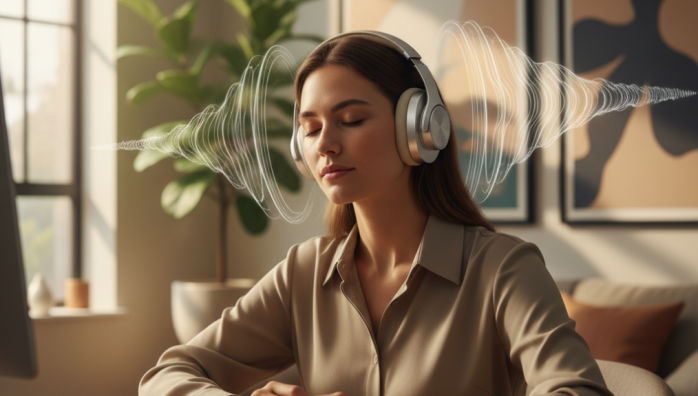Using White Noise for Deep Work
by admin in Productivity & Tools 13 - Last Update November 18, 2025

I\'ll be honest, for years I thought white noise was a productivity gimmick. The idea of adding *more* sound to an already noisy environment to help me focus seemed completely backward. My desk is near a busy hallway, and the constant chatter, footsteps, and ringing phones were the bane of my existence. I needed silence, or so I thought. After another afternoon of losing my train of thought for the tenth time, I decided to give this \'gimmick\' a serious try. What I discovered fundamentally changed how I approach my most important tasks.
What I learned about white noise (the non-scientific version)
Before this experiment, my only concept of white noise was the static from an old television. But in the context of focus, it\'s not about the sound itself; it\'s about what that sound does to everything else. I came to think of it as an auditory blanket. It’s a constant, uniform sound across all hearable frequencies. Because it’s so consistent, my brain quickly learns to ignore it. More importantly, this auditory blanket \'masks\' other, more jarring sounds. The sudden laugh from the kitchen or a door slamming down the hall no longer pierces my bubble of concentration. They\'re just absorbed by the static.
My initial failures and the big breakthrough
My first attempt was a disaster. I found a random \'white noise\' track online, cranked up the volume on my headphones, and tried to dive into a complex report. It felt like I was sitting next to a jet engine. It was abrasive, stressful, and even more distracting than the office noise. I almost gave up right there.
The \'aha\' moment: it\'s not just white noise
My mistake was thinking all \'static\' was the same. A bit of research led me to discover color noises, specifically pink and brown noise. This was the breakthrough. Pink noise has a lower pitch, more like a steady waterfall or wind, while brown noise is even deeper and more rumbly, like a strong river current. I found that pure white noise was too harsh for me, but brown noise? That was my sweet spot. It was rich and low, creating a calming, impenetrable wall of sound that my mind could easily settle into.
How I now use sound for my deep work sessions
Integrating this into my routine has become a non-negotiable ritual. It\'s not just about hitting play; it’s a process. Here’s how I do it:
- Choose the right flavor: I have a few go-to brown noise tracks I use. Sometimes I\'ll switch to a \'rain on a tent\' sound if I need something a little less monotonous. Experimentation was key for me.
- Set the right volume: I learned my lesson. The volume should be low enough that it’s not the primary thing I\'m hearing. It should just be present in the background, a subtle foundation for my thoughts. If someone were to tap me on the shoulder, I should be able to hear them easily.
- Pair it with a timer: I use the Pomodoro Technique heavily. When I start my 25-minute timer, I start my brown noise. When the timer goes off, the sound goes off. This has trained my brain to associate that specific sound with a period of intense, dedicated focus.
Is it a cure-all for distraction?
No, and I think it\'s important to be realistic. White noise (or its colored cousins) is a powerful tool, not a magic wand. If I’m tired, unmotivated, or unclear on my task, no amount of sound will fix that. It\'s a facilitator. It removes the *external* auditory friction, clearing the path for my mind to do its job. For me, it turned an unpredictable and chaotic soundscape into a controlled, predictable one, and that has made all the difference in my ability to perform deep work consistently.














